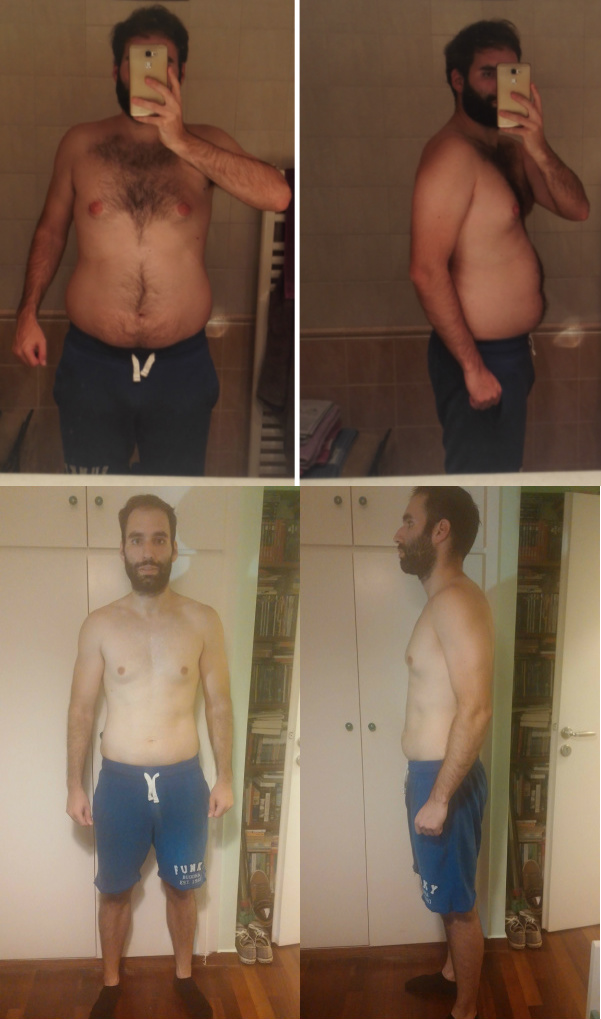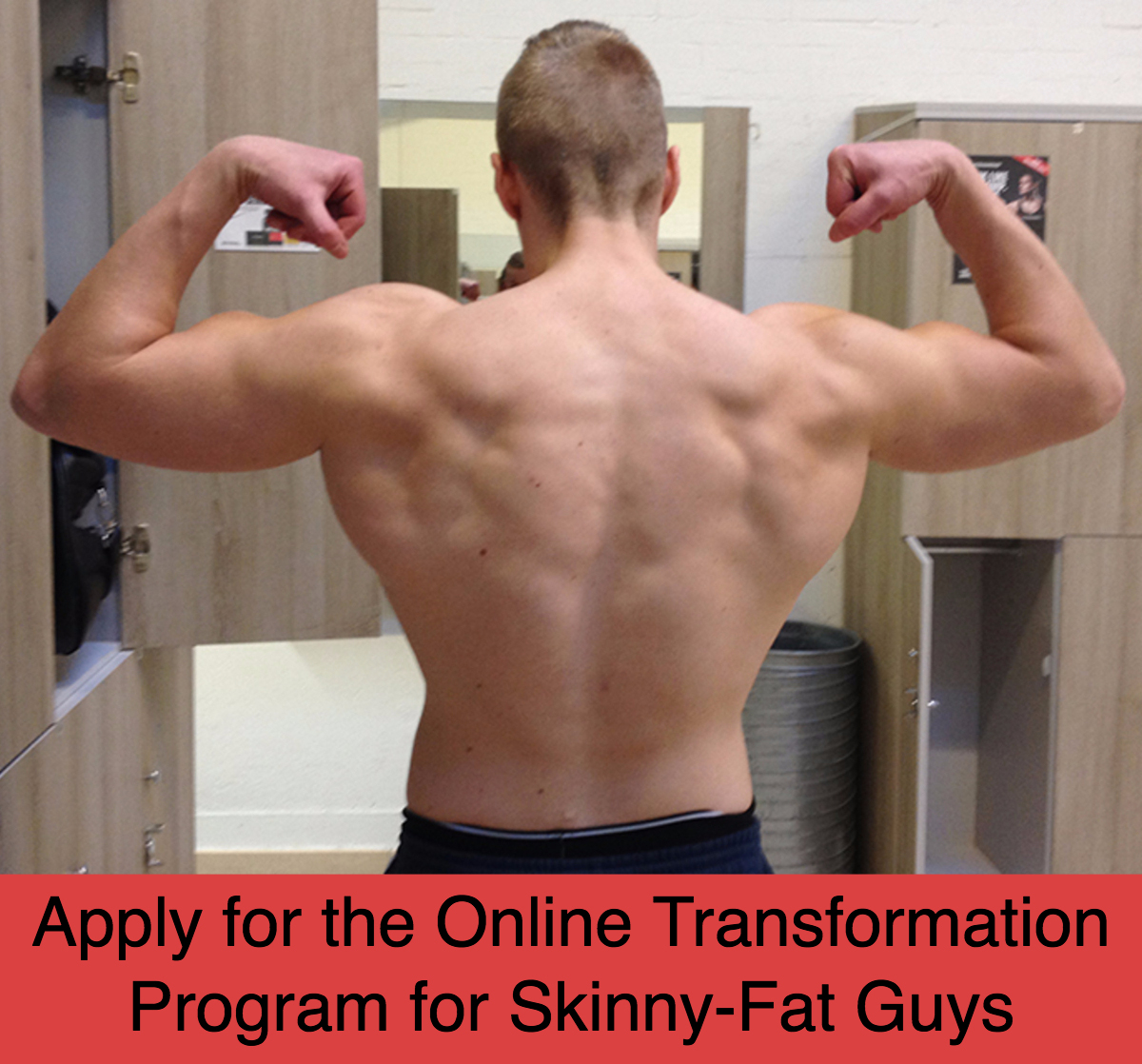 Today in the fitness community there’s a lot of bad talk about doing cardio.
Today in the fitness community there’s a lot of bad talk about doing cardio.
Supposedly cardio is bad for your metabolism, puts you into a catabolic state and eats up all your muscle.
In my experience, this is false.
I do cardio year around in one form or another and my resting heart rate is around 45.
I’ve always been in my best shape when doing lots of cardio and that’s also where I felt my best.
When I had a nearly fatal blood clot in the lungs from a genetic blood clotting disorder, the main thing that made me recover swiftly was according to my cardiologist excellent cardiovascular health from lots of exercise.
After my blood clot my lung function reduced by 30% but my body’s oxygen was barely affected and stayed at +98% and my heart rate barely went above 65.
The reason behind my swift recovery? Low resting heart rate and great cardio from years of exercise.
When you perform cardio year around, it makes you more likely to survive a heart attack, blood clot or another cardiovascular event.
Cardio training is cardio protective and makes you live longer.
But I know a lot of you don’t think much of that. You care mostly about body-composition, and I understand because I did too.
So what does cardio do for your body-composition?
Well, it does a lot.
First and foremost, it speeds up your recovery.
When you recover faster, you can:
- Train longer.
- Train harder.
- Get more work done in a shorter amount of time.
A typical gym workout of mine lasts 90 minutes and has 100 sets.
I put all my exercises into supersets and circuits so my heart rate stays elevated throughout the whole workout.
I barely rest when at the gym and take all 100 sets to failure.
Then the next day I’m ready to go at it again.
I’ve trained full body 4-6 days per week in this way for years and recovered from it without problems.

Lean 210 LBS (95 KG)
That means I did 400-600 sets per week of resistance training and also performed lots of cardio exercise in addition to this training.
Now compare this to a typical “evidence based” workout which has 10-20 sets per body-part per week (thus a total of 60-120 sets per week at most).
Because of my enhanced recovery I get in way more volume per week, and that leads to more muscle gains over the long term since volume is the main driver of growth.
Therefore, doing cardio is great for your recovery and enables you to gain more muscle mass over the long-term.
I’ve gained most of my muscle mass as a direct result of my recovery (which came from better cardio) because my max strength on the compound lifts have not increased in the last 7-8 years, but my total training volume has increased exponentially.
Second, for those of you with a naturally big appetite and high body-fat levels, it might be the only method that can get you lean in a sustainable way and now I’ll explain why.
Anytime I’ve dieted down in my life I’ve felt miserable and my physique looked flat and weak.
Throughout the fat loss I would have trouble falling asleep from hunger and wake up with a burning stomach at night.
The sleeping problems eventually lead to low sex drive and poor training performance.
That’s even when I had a mild Calorie deficit of 300.
This is normal for people with a naturally high appetite and a genetically high body-fat set point.
These are usually very endomorphic guys like my client Apostolis that start out with a body similar to this:

And in some cases even a lot of skinny-fat guys have this “hunger” gene and very high genetic body-fat set point.
If you’ve been in this situation, you probably know it all too well… You’re on a diet in a mild Caloric deficit and every night when you go to bed you feel a bit hungry. Then you wake up in the middle of the night with a burning stomach.
Then you try to sleep it off and if you manage to sleep, the sleep is low quality so you wake up tired the next day.
This leads to a cascade of negative effects on your body over the long-term and eventually you end up with less muscle mass, bad gym performance and almost no sex drive.
Why is this happening? Because you move too far away from your natural homeostasis the relative increase in pain vs reward becomes too high.
Your family is most likely all fat and stay at between 25-40% body-fat. When you try to go way below that, your body fights back and tries to get you back into homeostasis.
No matter what diet you try, this always happens and you end up regaining your weight.
When you struggle losing fat with diet alone, getting into a Caloric deficit through diet can cause major issues with your sleep and hormonal production.
The truth is that genetics matter a lot and when someone says they’re constantly hungry but not losing weight, it’s most likely true.
The only way to trick your genetics and avoid this problem is to do cardio every single day.
When I achieved fat loss through cardio exercise I felt great and had a lot more muscle mass at the end of the fat loss.
By doing cardio daily, you can burn off a lot of extra Calories, eat more food and still be in a Caloric deficit.
For example, if you are 100 KG (220 LBS) and you go for a 90 min brisk walk you can reach 10,000-12,000 steps and burn off 1000 Calories.
Keep in mind that a typical leg training session at the gym barely burns 300 Calories and upper body even less, therefore you’re not burning a lot from the resistance training. You NEED cardio to get a significant Calorie burn.
So if you do enough cardio to burn 1000 Calories, you are able to eat an extra meal of 700 Calories while still being in a 300 Calorie deficit.
All you have to do to achieve this is to do a long brisk walk or bike ride daily. Even 30 minutes will help you, but the more you do, the better.
This walk or bike ride can put you into a more aggressive deficit without the extra “pain” that comes from restricting food.
You don’t have to go all out and kill yourself with cardio — in fact I don’t recommend you do this because it’s not sustainable at first.
I don’t recommend you start out with high intensity cardio because you will not be able to keep a good pace for long enough to achieve a significant Calorie burn.
The truth is that HIIT (High Intensity Interval Training) is a terrible way of doing cardio if you already do resistance training. It doesn’t burn much more Calories than steady state, but it tires you out much faster and leads to much bigger hunger after you finish.
For most people, HIIT burns about the same amount of Calories as weight training (your weight training should eventually turn into HIIT anyways) — and that is not a lot in the first place.
If you want to burn the most Calories while enhancing recovery, do the type of cardio where you can maintain a pace for at least 30 min.
Therefore, at first go easy and achieve the Caloric burn through low-moderate intensity cardio so you can enhance your recovery instead of slow it down.
Then later as you become leaner and more conditioned you can start to do higher intensity cardio to burn off even more Calories.
The type of cardio I recommend for any beginner is to simply do 1-2 hour of brisk walking per day. Use any step counter app on your smart phone and try to reach 12,000 steps a day. This achieves a significant Calorie burn.
By losing fat this way, you will feel full and get a good night of sleep. And training recovery speeds up so you can train harder in the gym too. This burns off some additional Calories and leads to a positive feedback loop where your body is in fat burning mode — while feeling less “pain”.
Does this mean you can skimp on the diet?
No, if you’re at a high body-fat level and struggle losing fat, you need to also eat a diet that’s high in foods that are high in the satiety index (usually lean proteins, vegetables and foods rich in fiber).
The combination of a high food intake (from high satiety index foods) and lots of cardio exercise enables you to burn off body-fat while maintaining all your muscle (or even gaining some) and while feeling good in the process (good sleep, no excessive hunger and high energy levels).
This is the way I have always gotten into my best shape. Consuming lots of energy from diet while expending lots of energy through exercise. It’s the consumption and expenditure of energy that results in the best body-composition changes.
When you’re sedentary and do a low Calorie, low carb diet, no body-composition changes happen. You just become a smaller version of your current self. This is the lazy approach which unfortunately is the most popular today (KETO + short easy “evidence based” workouts).
Be proud but stay hungry!
Oskar Faarkrog, ISSA Certified Personal Trainer
 Read my free 50 page guide "The 2 Phases of a Skinny-Fat Transformation"
Read my free 50 page guide "The 2 Phases of a Skinny-Fat Transformation"